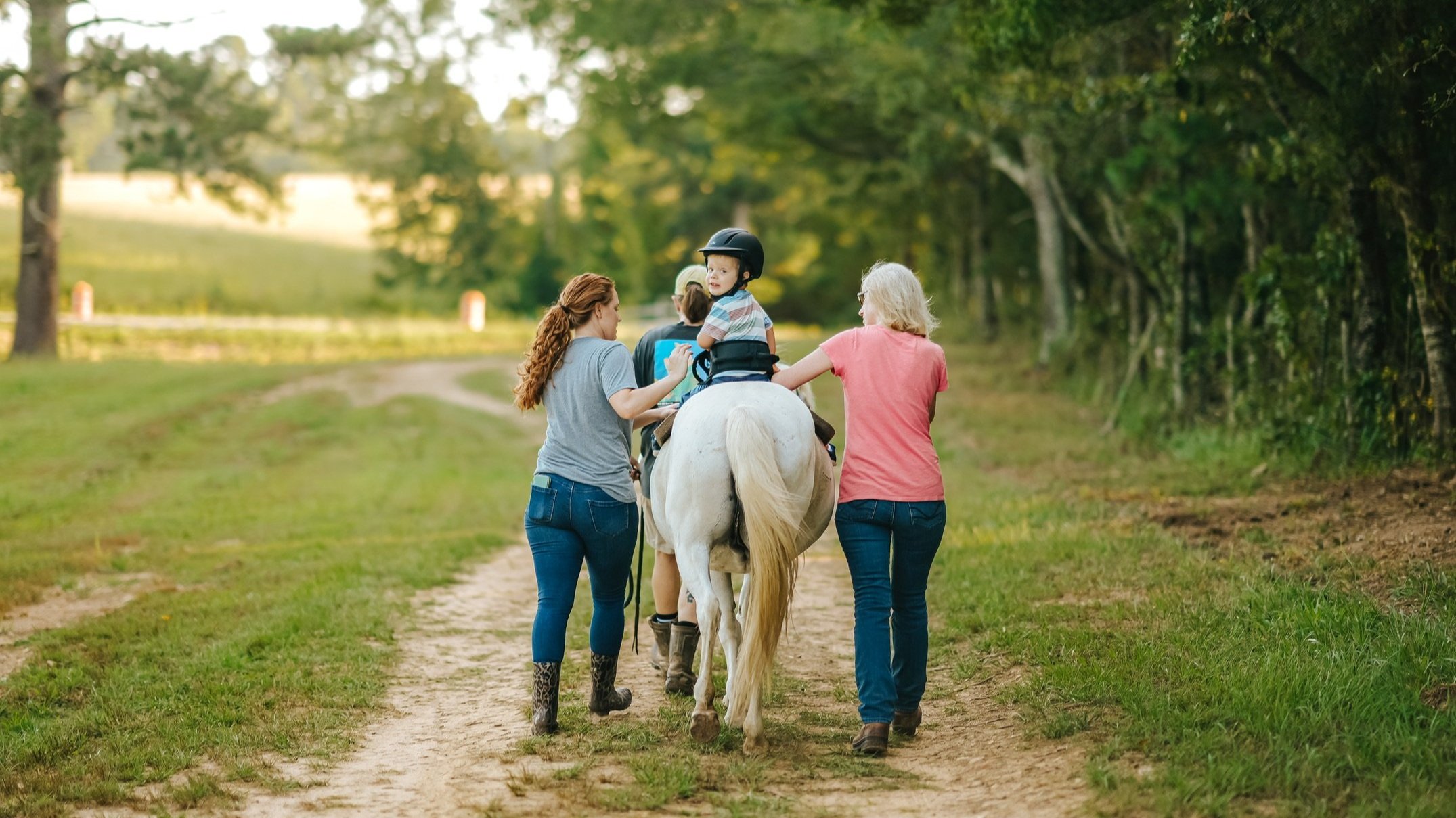
Equine Assisted Therapy
Hippotherapy
Hippotherapy is a medical treatment such as occupational, physical, and speech therapy utilizing the movement of the horse as a treatment strategy to address functional goals.
Studies show that hippotherapy is helpful with improving arousal, rapidly gaining attentional focus, and motivation to participate. The patient’s behavioral difficulties are often managed positively by altering the horse’s movement. Psychological benefits may include improved self-esteem, increased enthusiasm with treatments and enjoyable interactions with the horse.
Occupational Therapy
Focus on the movement of the horse and how it impacts the whole person, providing input that the therapist can alter to physical, sensory, cognitive, and emotional systems to address daily living skills.
COGNITIVE BENEFITS MAY INCLUDE:
Increased ability to express thoughts and needs
Improved understanding of visual cues
Visual coordination
Sensory input
Tactile responses
Improved attention
Speech / Language Therapy
Patients’ neurological systems responsible for speech and language skills are impacted by the movement of the horse.
BENEFITS MAY INCLUDE:
Receptive, pragmatic, and expressive language improvement
Stuttering improvement
Oral motor functioning
Improved auditory processing
Physical Therapy
Focus on developing balance by improving core stability to stay centered on the horse. The movement of the horse influences the movement of the pelvis and spine in a multi-dimensional pattern.
BENEFITS MAY INCLUDE:
Improved gross motor skills
Improved range of motion
Trunk core strength
Control of extremities
Improved postural symmetry
Reduced abnormal muscle tone
Respiratory control
Our Clients
Barn fee of $55 paid by family. The therapist charges for the sessions directly to the client and these fees may be billable through insurance for partial or full reimbursement.
Scholarships may be available for qualifying participants.
Contact us for details.
Children age 2 years old and up / adults
Autism
Down Syndrome/Trisomy 21
Cognitive disabilities, including brain and spine injuries
Language and sensory processing disorders
Developmental delays
Genetic disorders
Depression
Rates
Sign up here!
“The thing I love most is that the horse and rider have a close connection. The neuromotor input we get from the equine movement is exponentially more powerful than using a trampoline or a swing. Because the horse has a personality and character the rider and horse will end up doing things together that count’t possibly be done with equipment in a clinical setting.”
Wendy Kitkosky, Occupational therapist, KidSource Therapy




